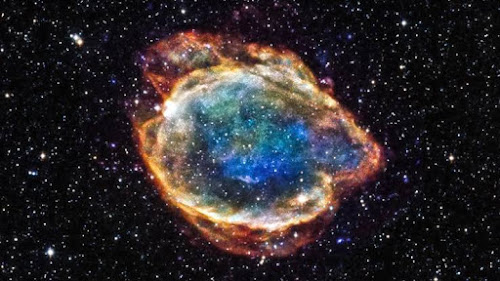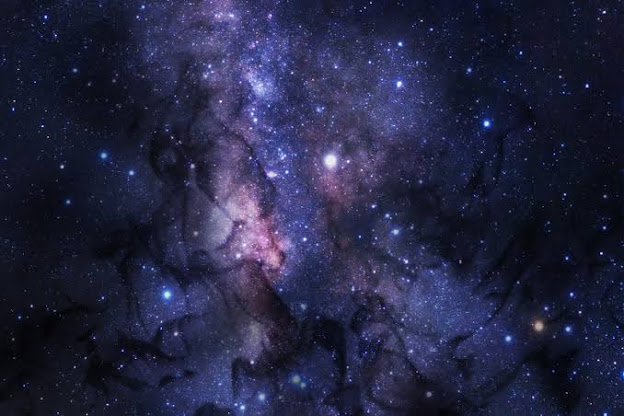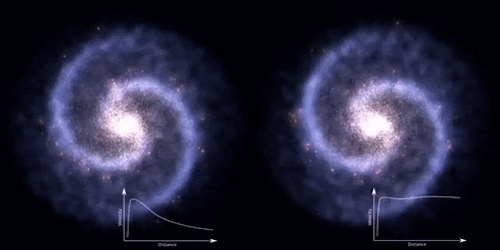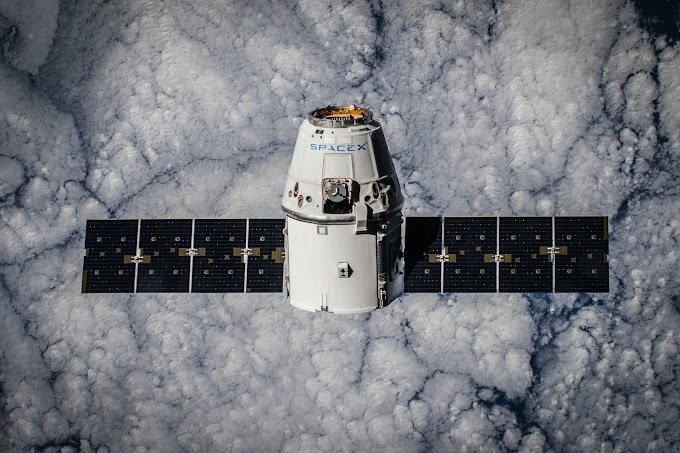DARK MATTER AND DARK ENERGY-The unsolved mystery
Our universe is a very mysterious and strange place. There are many theories that make us think that whether our universe is a place or not or even may exist or not in reality. Even many theories questioned the existence of our universe, they suggest that our universe may be a dream of a celestial Devin being or maybe a program of some intelligent beings. In Hindu recognition, it is believed that our universe is a dream of Lord VISHNU.
 |
In the early 1990s, one thing was fairly certain about the expansion of the universe. It might have enough energy density to prevent its expansion and recollapse, it'd have so little energy density that it might never stop expanding, but gravity was certain to slow the expansion as time went on. Granted, the slowing had not been observed, but, theoretically, the universe had to slow. The universe is filled with matter and therefore the attraction of gravity pulls all matter together. Then came 1998 and therefore the Hubble Space Telescope (HST) observations of very distant supernovae that showed that, an extended time ago, the universe was actually expanding more slowly than it is today. So the expansion of the universe has not been slowing because of gravity, as everyone thought, it's been accelerating. No one expected this, nobody knew the way to explain it. But something was causing it.
DARK MATTER
Unlike normal matter, the substance doesn't interact with electromagnetic force. This means it doesn't absorb, reflect or emit light, making it extremely hard to identify. In fact, researchers are ready to infer the existence of substance only from the gravitational effect it seems to possess on visible matter. Dark matter seems to outweigh visible matter roughly six to at a minimum of one, making up about 27% of the universe. Here's a sobering fact: The matter we all know which makes up all stars and galaxies only accounts for five of the content of the universe! But what is dark matter? One idea is that it could contain "supersymmetric particles" – hypothesized particles that are partners to those already known within the Standard Model. Experiments at the LHC may provide more direct clues about dark matter.
Many theories say the substance particles would be light enough to be produced at the LHC. If they were created at the LHC, they might escape through the detectors unnoticed. However, they might take away energy and momentum, so physicists could infer their existence from the quantity of energy and momentum “missing” after a collision. Dark matter candidates arise frequently in theories that suggest physics beyond the quality Model, like supersymmetry and additional dimensions. One theory suggests the existence of a “Hidden Valley”, a parallel world made from a substance having little or no in common with matter we all know. If one among these theories proved to be true, it could help scientists gain a far better understanding of the composition of our universe and, especially, how galaxies hold together.
DARK ENERGY
- https://www.google.com/amp/s/www.space.com/amp/17661-theory-general-relativity.html
- https://www.google.com/amp/s/www.forbes.com/sites/startswithabang/2016/11/25/what-every-layperson-should-know-about-string-theory/amp/








2 Comments
Good job bro
ReplyDeleteThnx bro
Delete